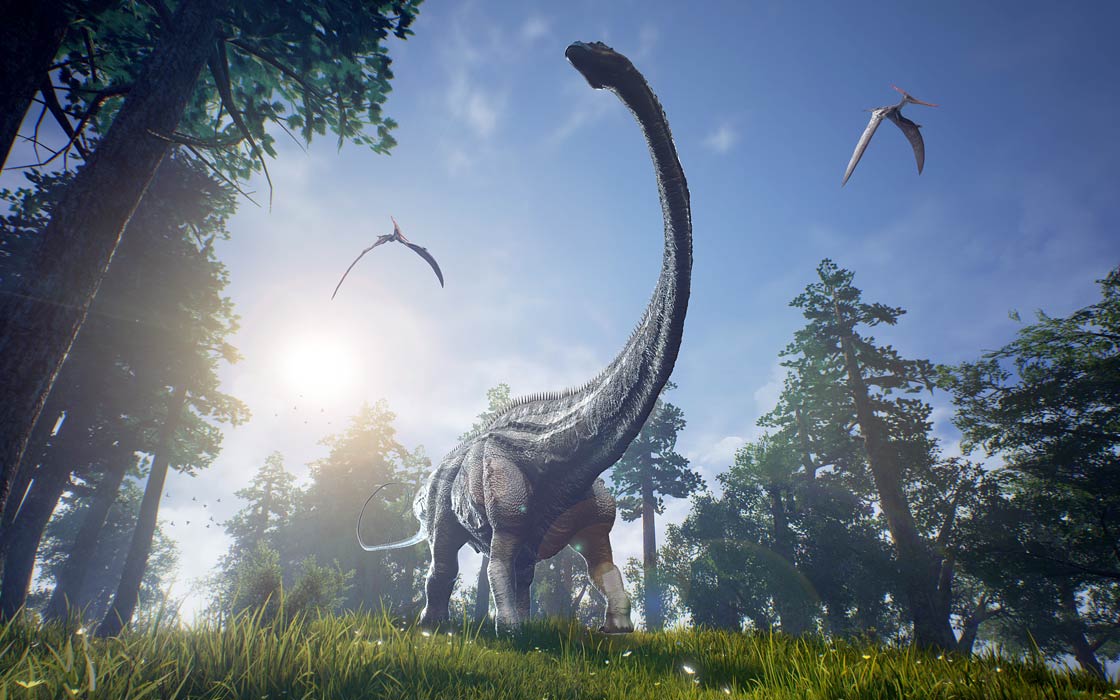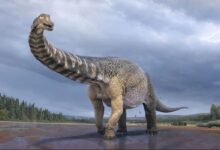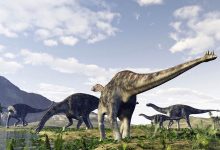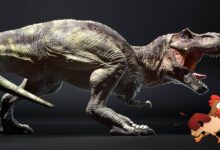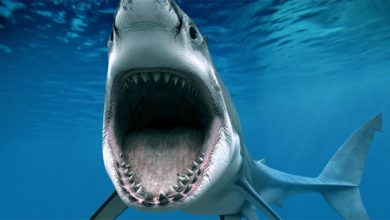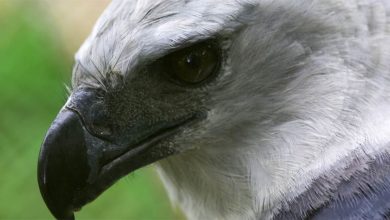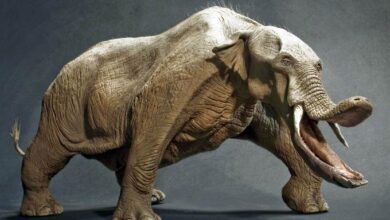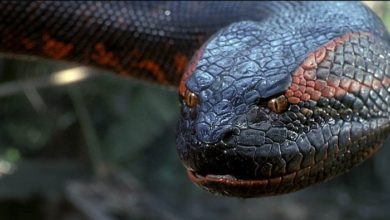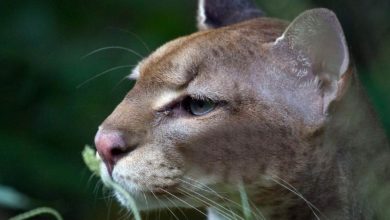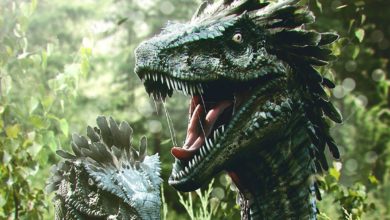Dinosaurs with the longest necks – Barosaurus
Barosaurus lentus
Sauropods had the longest necks among dinosaurs
Some of them had necks longer than any other animal (although they had fewer vertebrae than the serpentine necks of the sea reptiles – plesiosaurs, who also lived in the Mesozoic era). In the past, it was believed that sauropods stood at the bottom of bodies of water, and their long neck allowed them to raise their heads above the water to draw air. Today it is known that they were land animals. Thanks to the long neck, they could reach for a large radius of plants without moving from their place. Thanks to this, they saved a lot of energy.
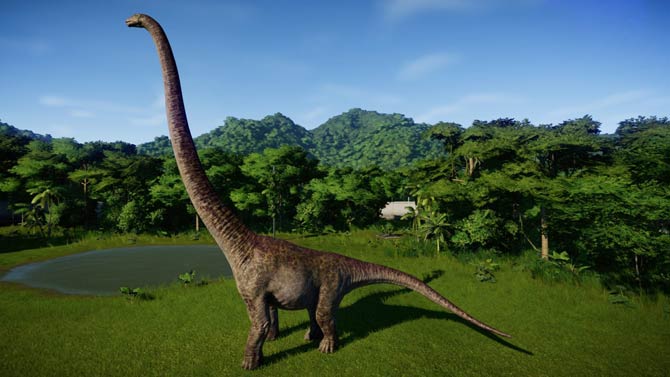
Barosaurus – “heavy lizard”
The Barosaurus was an unusually long sauropod, similar to its close relative, the Diplodocus. However, they differed in the proportions of the neck and tail. The Barosaur’s tail was quite short, but the neck was extremely long (9 – 15 m), thanks to which the Barosaurus reared up taller than almost all North American dinosaurs. The genus Barosaurus also includes fragments of skulls, jaws, limb bones and other remains of a dinosaur related to Diplodocus, found in Tanzania.
The Mamenchisaurus, who lived in the territory of present-day China, also had a similar long neck.
Barosaurus lived in the late Jurassic about 150 million years ago in North America (South Dakota, Utah). Finds classified by some researchers to the genus Barosaurus are known from Africa (including Tanzania), but the correctness of their classification is often questioned. In North America, his finds come from rocks of the Morrison Formation.
Barosaurus reminiscent of the more famous Diplodocus, from which it differs proportionally by a 9 m (29.5 ft) to 15 m (50 ft) [BYU 9024 specimen] long neck, a slightly shorter tail and a much shorter body. The neck was composed of 15 (according to other data from 16) cervical vertebrae, the largest of which exceeded 1 m in length. Barosaurus vertebrae (with the exception of the terminal caudal vertebrae, which we do not know) had air chambers which reduced the animal’s weight.
The structure of the cervical vertebrae differed significantly from other Diplodocidae representatives. The structure of the Barosauru’s cervical vertebrae limited its ability to move its neck vertically, but made it easier to move it sideways. According to Taylor and Wedel, this may indicate that the Barosaurus, unlike other Diplodocidae, has adapted to feeding on low vegetation.
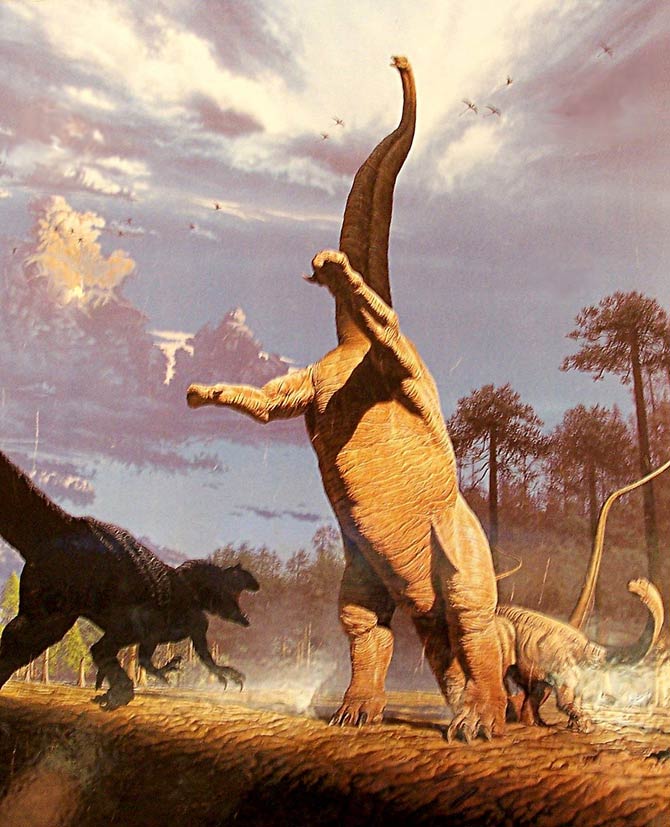
Lifestyle
It is assumed that the way of life was analogous to the Diplodocus, which, due to the greater number of finds and the much more complete state of the reconstructed skeleton, is a model for ecological reconstructions of other genera of the Diplodocus family. In the case of the Barosaurus, it is uncertain whether it had a whip-tipped tail for defense, as the vertebrae of this part of the tail have not been found. Some researchers also postulate that Barosaurus could briefly stand on two legs in order to fight a predator and take food from high tree crowns.
Allosaurs were a threat to the Barosaurs. Allosaurs hunted Barosaurs.
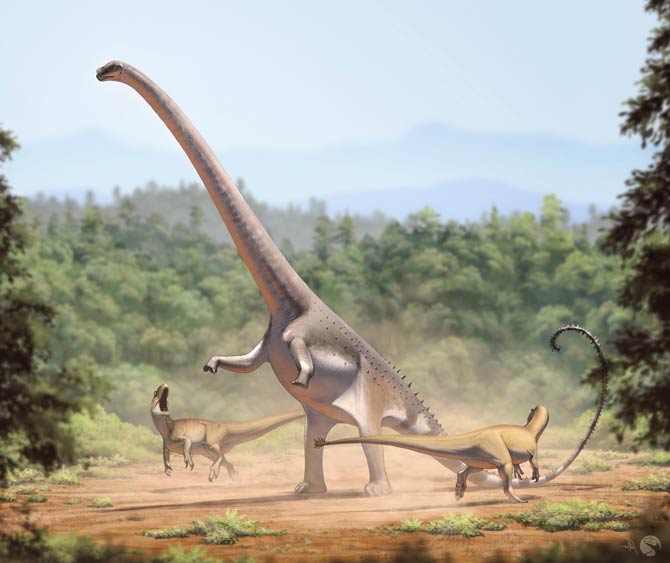
8 hearts of Barosaurus
The long neck of the Barosaurus probably was adapted to foraging high, as was the giraffe’s neck.
Some researchers have calculated that it required a huge heart, weighing as much as 1.6 tons, to pump blood into a brain so high. However, the bigger the heart, the slower the heart rate. Columbia University scholars ruled in 1992 that a heart so large would beat so slowly that blood pumped into the neck would run down between heartbeats.
So they hypothesized that the Barosaurus had 8 hearts: 2 main ones in the chest and 3 pairs of smaller ones along the neck. Each heart could only pump blood as high as the next, together making a kind of pump system. The researchers also claimed that high blood pressure made the dinosaur more hypertensive and risked premature death from a heart attack or stroke.
Skeptics, on the other hand, believe that the Barosaurus needed 1 heart of moderate size, supported by a system of valves in the carotid arteries that prevent blood from flowing back and by the waves of contractions of the muscular walls of the arteries pushing blood into the brain.
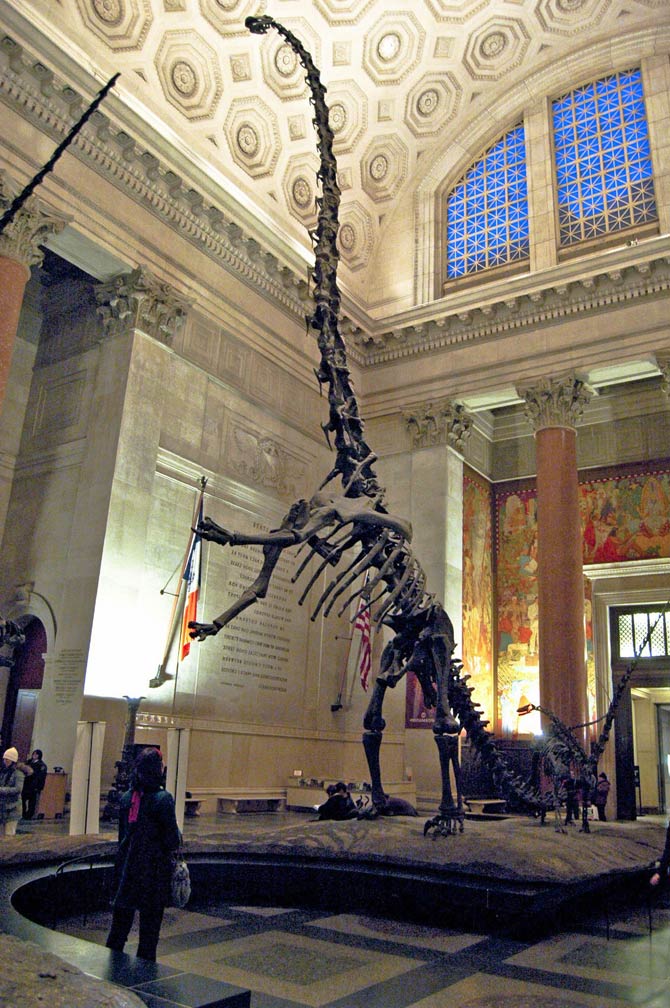
Detailed data / dimensions (size)
Barosaurus lentus
- Length: up to 38 m (125 ft) / 48 meters (157 ft) [BYU 9024 specimen]
- Weight: 43 tons / 66 tons [BYU 9024 specimen]
- Neck length: up to 15 m (49 ft)
- Lived: Late Jurassic, 152–150 Ma
Classification
- Kingdom: Animalia
- Phylum: Chordata
- Clade: Dinosauria
- Clade: Saurischia
- Suborder: †Sauropodomorpha
- Clade: †Sauropoda
- Family: †Diplodocidae
- Genus: †Barosaurus
- Species: † Barosaurus lentus
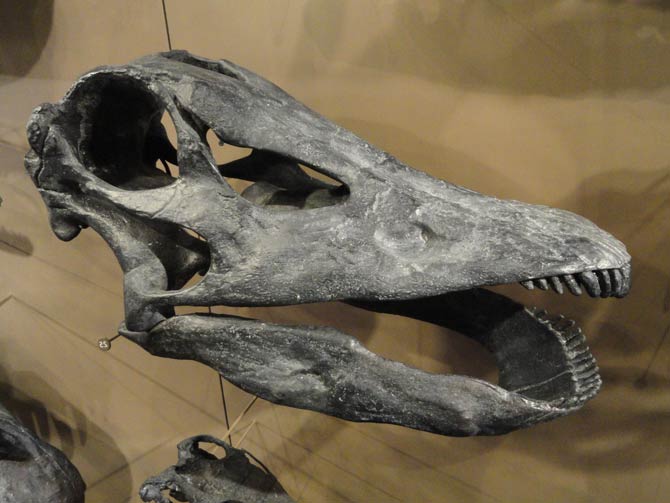
Recommended
- The longest dinosaurs. Sauropods Top 10
- The heaviest dinosaurs – Top 10
- The longest predatory dinosaurs. Theropods Top 10
- The heaviest predatory dinosaurs Top 10
- The longest Ornithischians (Ornithischia) TOP 10
- The heaviest Ornithischians Top 10
- The largest raptors (dromaeosaurs) Top 10
- The heaviest Dromaeosaurids / dromaeosaurs – Top 10
- The longest Ankylosaurus Top 10
- The heaviest Ankylosaurus Top 10
- The longest ceratopsians
- The heaviest cerapsians
- The longest and largest ornithopods
- The heaviest ornithopods Top 10
- The longest Stegosaurians (Stegosauria) TOP 10
- The heaviest Stegosaurians (Stegosauria) Top 10
- The smallest sauropods Top 10
- The smallest dinosaurs Top 10
- The largest pterosaurs Top 10
- Dinosaurs
- Dinosaurs database
- Predatory dinosaurs
- Animals & dinosaurs records
- The fastest animals – Top 100
- The fastest birds – Top 10

